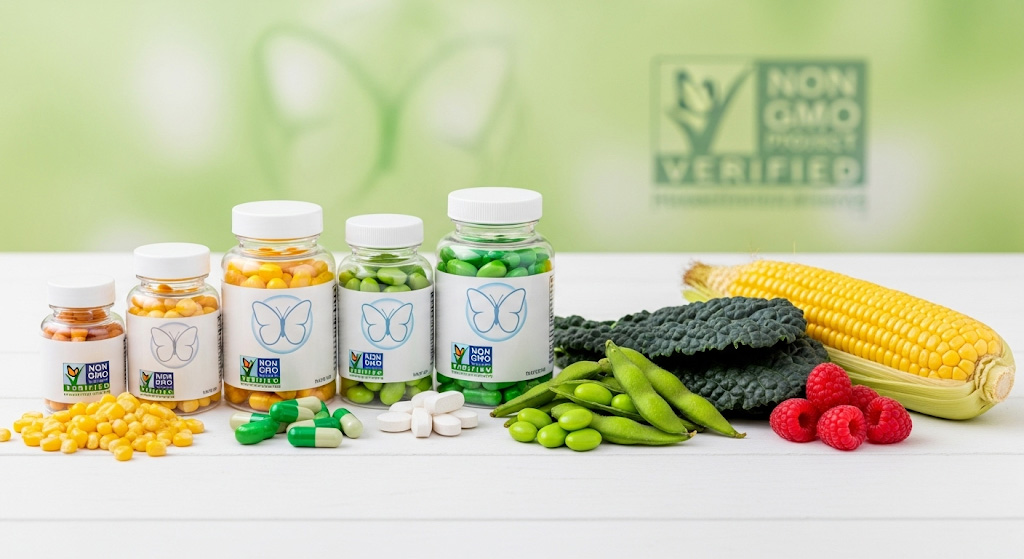As a professional manufacturer of dietary supplements, we specialize in producing high-quality magnesium malate with strict quality control and adherence to GMP standards. Our in-house production ensures consistent potency, purity, and bioavailability, providing reliable raw materials for brands, distributors, and healthcare providers. Magnesium malate has garnered increasing attention in nutrition and wellness markets due to its dual components: magnesium, an essential mineral involved in over 300 enzymatic reactions, and malic acid, a naturally occurring organic acid abundant in fruits such as apples. The combination is widely recognized for supporting muscle function, energy metabolism, and fatigue reduction, making it a preferred choice among athletes, wellness-focused individuals, and people managing chronic fatigue.

Magnesium plays a central role in physiological processes including ATP synthesis, neuromuscular conduction, cardiovascular function, and bone health. Deficiency in magnesium is linked to muscle cramps, fatigue, insomnia, and even cardiovascular irregularities. Malic acid, as a key intermediate of the Krebs cycle, is essential for mitochondrial energy production, facilitating the generation of ATP within cells. When combined as magnesium malate, these components provide synergistic effects, potentially improving both mineral absorption and cellular energy metabolism.
From a manufacturing perspective, producing magnesium malate requires careful attention to compound stability, particle size, and purity to maximize bioavailability and safety. High-quality magnesium malate not only delivers essential minerals but also ensures that the malic acid component remains effective in supporting metabolic pathways. Our production process involves standardized sourcing of raw magnesium and malic acid, precise compound formation, and rigorous quality testing, enabling downstream brands to confidently market products with validated efficacy.
The health benefits of magnesium malate are supported by both mechanistic studies and clinical observations. For example, magnesium contributes to neuromuscular regulation, allowing muscles to contract and relax efficiently, while malic acid participates in cellular energy pathways, potentially alleviating fatigue and enhancing physical performance. Preliminary studies have also explored magnesium malate supplementation in conditions like fibromyalgia, showing improvements in muscle tenderness and energy levels. Although more extensive trials are needed, these findings highlight the potential for magnesium malate to be used both as a general wellness supplement and a targeted support intervention.
Furthermore, regulatory compliance is a critical consideration for manufacturers. Magnesium malate is primarily marketed as a dietary supplement in most regions, including the United States, European Union, Canada, and Australia. Compliance requires accurate labeling, proper dosage guidance, and adherence to claims regulations. As a manufacturer, ensuring that products meet regional standards for ingredient purity, dosage, and health claims is fundamental for market access and brand trustworthiness.
Magnesium Malate Benefits: Health Benefits, Mechanisms, and Clinical Insights
Magnesium malate provides a range of physiological and functional benefits due to the synergistic combination of magnesium and malic acid. One of the most recognized advantages is muscle health support. Magnesium is essential for proper muscle contraction and relaxation, regulating calcium and potassium flux within muscle cells. Adequate magnesium levels help prevent muscle cramps, spasms, and tension, particularly in physically active populations and individuals with low dietary magnesium intake. When paired with malic acid, magnesium malate may further improve muscle energy metabolism, facilitating recovery after intense physical activity.
Another major benefit is its role in energy production and fatigue reduction. Malic acid is a critical intermediate in the Krebs cycle, where it assists in generating ATP, the body’s primary energy molecule. By providing both magnesium and malic acid in a bioavailable form, magnesium malate supplementation may enhance cellular energy efficiency, reduce sensations of tiredness, and improve endurance. Clinical observations in individuals experiencing chronic fatigue have shown that magnesium malate can help alleviate both mental and physical fatigue, supporting daily activities and cognitive function. Although larger, controlled trials are needed, these early findings suggest its potential as a therapeutic adjunct for energy support.
Magnesium malate also contributes to nervous system function. Magnesium regulates neurotransmitter release and modulates synaptic activity, supporting nerve signaling, relaxation, and mental clarity. The inclusion of malic acid indirectly supports neural energy metabolism, potentially helping with concentration and reducing tension. This mechanism is particularly relevant for individuals with high cognitive demand or those experiencing stress-related fatigue.
Clinical research has explored magnesium malate in the context of fibromyalgia, a chronic condition characterized by widespread musculoskeletal pain and fatigue. Studies have reported that supplementation with magnesium malate may reduce muscle tenderness, pain intensity, and overall discomfort, providing a non-pharmacological option for symptom management. Although evidence is preliminary, these outcomes highlight the compound’s potential applications in both clinical and general wellness contexts.
Beyond muscle and energy benefits, magnesium malate supports cardiovascular health by regulating heart rhythm and vascular tone. Adequate magnesium intake is associated with reduced risks of arrhythmias and hypertension, while malic acid may aid in metabolic processes that indirectly support cardiovascular function. Additionally, magnesium contributes to bone health by influencing calcium metabolism and supporting bone mineral density. For manufacturers, emphasizing these well-substantiated health benefits allows brands to communicate credible, evidence-based advantages to consumers.
From a manufacturing perspective, ensuring consistent bioavailability and product stability is critical. Variations in compound formation, particle size, and purity can affect the efficacy of magnesium malate. By controlling these parameters in-house, manufacturers can produce a high-quality product that reliably delivers the intended physiological benefits. This level of control is particularly important for brands targeting sports nutrition, chronic fatigue management, and general wellness markets, where product consistency directly impacts consumer trust and regulatory compliance.
Magnesium Malate Benefits: Dosage, Safety, and Regulatory Considerations
Determining the correct dosage of magnesium malate is critical to achieving the intended health benefits while minimizing potential side effects. Recommended daily intake depends on factors such as age, gender, dietary intake, physical activity, and individual health conditions. Most commercially available magnesium malate supplements provide between 125 mg and 500 mg of elemental magnesium per day, often divided into two or three servings to improve absorption and gastrointestinal tolerance. In clinical studies focusing on chronic fatigue or fibromyalgia, higher dosages—sometimes up to 1,200–1,500 mg per day of magnesium malate—have been administered under medical supervision, generally with positive tolerability.
Magnesium malate is generally considered safe for healthy adults when consumed within the recommended range. Mild gastrointestinal effects such as diarrhea, nausea, or abdominal cramping may occur at higher intakes, a phenomenon common with many magnesium salts. Individuals with renal impairment or kidney disease should exercise caution, as excessive magnesium can lead to hypermagnesemia, potentially causing cardiac or neurological complications. Special populations, including pregnant or breastfeeding women, elderly individuals, and patients taking medications, should consult healthcare providers before initiating supplementation. Notably, magnesium may interact with certain antibiotics, diuretics, or blood pressure medications, potentially affecting absorption or efficacy.
From a regulatory perspective, magnesium malate is primarily marketed as a dietary supplement, though specific requirements vary across jurisdictions:
-
United States (FDA/DSHEA): Magnesium malate is classified as a dietary supplement. Labels must include Supplement Facts, ingredient listing, recommended daily intake, and disclaimers for structure/function claims:
“This statement has not been evaluated by the Food and Drug Administration. This product is not intended to diagnose, treat, cure, or prevent any disease.”
-
European Union (EFSA): Classified as a food supplement, any nutrition or health claims must be substantiated with scientific evidence and approved by EFSA prior to marketing. Claims like “supports energy production” or “reduces fatigue” require documented efficacy.
-
Canada (Health Canada): Magnesium malate is regulated under Natural Health Products (NHPs), and licensing requires evidence of safety, quality, and efficacy. Labels must meet strict disclosure and dosage requirements.
-
Australia (FSANZ / TGA): Regulated primarily as a dietary supplement; however, therapeutic claims may trigger TGA oversight. Manufacturers must ensure that labeling, dosage, and claims comply with regional regulations to avoid classification as a therapeutic good.
As a professional manufacturer, producing magnesium malate in-house allows full control over regulatory compliance. Standardized processes, quality testing, and validated production methods ensure that products meet international standards for purity, dosage accuracy, and ingredient disclosure. This reliability provides brands and distributors with a high level of confidence, enabling them to market safe and effective magnesium malate supplements across global markets.
Furthermore, manufacturers can offer custom formulations or combination products that integrate magnesium malate with complementary nutrients such as vitamins B complex, calcium, or potassium, addressing diverse consumer needs in sports nutrition, wellness, and clinical supplementation. Maintaining strict quality control and documentation ensures that these combination products remain compliant with regulatory frameworks while delivering intended health benefits.
Magnesium Malate Benefits: Market Applications, Emerging Trends, and Summary
Magnesium malate has established itself as a versatile ingredient across multiple markets due to its bioavailability, functional benefits, and scientific support. In the sports nutrition sector, it is frequently incorporated into supplements targeting athletes and active individuals. Its roles in muscle contraction, recovery, and energy production make it ideal for pre- and post-workout formulations. By supporting mitochondrial ATP synthesis through malic acid, magnesium malate may also enhance endurance and reduce fatigue during high-intensity or prolonged training sessions.
In the context of chronic fatigue and fibromyalgia management, magnesium malate has gained attention for its potential to alleviate pain and tenderness, improve energy levels, and support quality of life. Although clinical studies are still limited, preliminary research suggests that consistent supplementation can provide noticeable relief from musculoskeletal discomfort and fatigue. For manufacturers, this represents an opportunity to develop clinically informed products targeting both general wellness and specific health conditions, meeting a growing demand among healthcare practitioners and informed consumers.
General wellness and preventive health are other important market applications. Magnesium malate is increasingly found in multivitamin/mineral complexes, functional foods, and energy-support supplements aimed at a broad audience, from office workers experiencing mental fatigue to older adults seeking support for neuromuscular and cardiovascular health. Its combination of mineral support and metabolic energy enhancement allows brands to position magnesium malate as a comprehensive wellness ingredient suitable for daily supplementation.
Emerging trends in magnesium malate research and marketing include:
-
Enhanced Bioavailability Studies: New research demonstrates that magnesium malate may offer superior absorption compared to magnesium oxide or carbonate, enhancing its efficacy and consumer appeal.
-
Mitochondrial Support: Advances in cellular metabolism research highlight malic acid’s role in the Krebs cycle, positioning magnesium malate as a functional ingredient for energy optimization at the cellular level.
-
Personalized Supplementation: Integration with nutrigenomics and metabolic profiling allows manufacturers to offer tailored magnesium malate products that target individual deficiencies or metabolic needs.
-
Global Market Growth: Rising awareness of magnesium deficiency, combined with demand for energy, muscle recovery, and wellness supplements, is driving market expansion across North America, Europe, and Asia-Pacific.
From a manufacturing standpoint, producing magnesium malate in-house ensures consistent quality, reliable bioavailability, and regulatory compliance, enabling brands to confidently develop products that meet both market expectations and scientific standards. By emphasizing both the health benefits and manufacturing integrity of magnesium malate, companies can differentiate their products in a competitive supplement landscape.
Authoritative References
-
National Institutes of Health (NIH) – Office of Dietary Supplements
Magnesium Fact Sheet: https://ods.od.nih.gov/factsheets/Magnesium-Consumer/ -
European Food Safety Authority (EFSA)
Scientific Opinion on Dietary Reference Values for Magnesium: https://www.efsa.europa.eu/en/efsajournal/pub/5879 -
Health Canada
Natural Health Product Regulations: https://www.canada.ca/en/health-canada/services/drugs-health-products/natural-non-prescription.html -
Food Standards Australia New Zealand (FSANZ)
Guidance on Dietary Supplements: https://www.foodstandards.gov.au/industry/supplements -
Peer-Reviewed Research
-
Altura BM, Altura BT. Magnesium, malic acid, and fibromyalgia. Magnesium Research, 1995;8(4):313–322.
-
Walker AF, Marakis G, Christie S, Byng M. Mg citrate supplementation improves absorption compared with Mg oxide in healthy volunteers. Magnesium Research, 2003;16(3):183–191.
-






